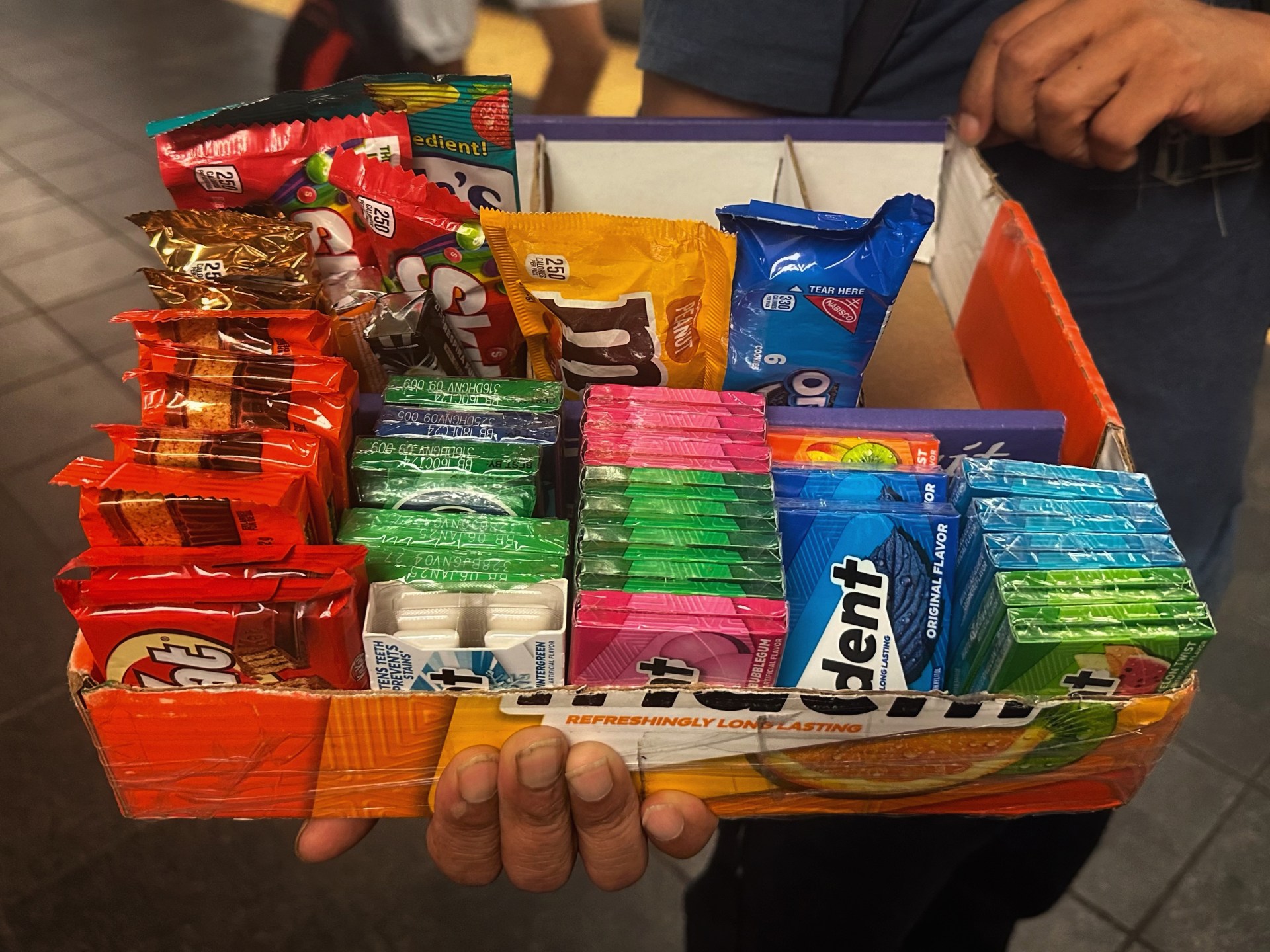New York City, United States – A clock on the electronic display flickers to noon above the bustling Times Square subway station in New York City. Amid the lunchtime crowd of commuters and tourists stands María, a 31-year-old single mother from Ecuador whose daily life revolves around this transit hub.
It is here, in the tunnels underneath the city, that María earns the money she needs to survive.
On her back is her two-year-old daughter, and in her hands is a colourful tray of candy, crammed with packages of M&Ms and Kit Kat chocolates and sticks of Trident gum.
From the Times Square station, María can hop on and off the Number 7 train, a popular link to the borough of Queens. As she walks from one carriage to the next, she repeats “candy” and “dollar” — two of the few words she knows in English — hoping to make a sale.
Most people, however, look away. Others become aggressive, María said.
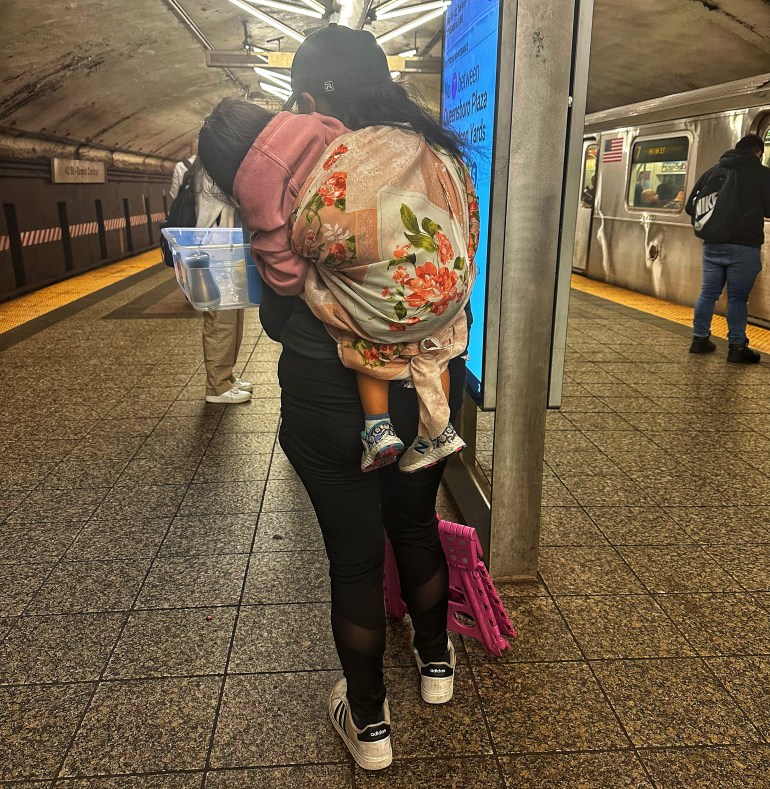
New York City is in the midst of an immigration crisis, with more than 113,300 asylum seekers arriving since 2022 — and too few shelters to house them. With the city’s immigration policies in the spotlight, María’s interactions with the public can be tense.
“People insult us or record us without authorisation, accusing us of importing bad habits and poverty from home,” María said. “They don’t understand our situation.”
María — who is using a pseudonym to protect her privacy — is part of a population of largely Ecuadorian candy sellers who make a living on the New York City subway system.
Peddling sweets is familiar work for María: It is the same job she used to do in her hometown in the province of Cotopaxi. But it is also a necessity. Without legal papers authorising her stay in the US, finding steady employment is difficult, seemingly impossible.
“It’s what my cousin and other women from Ecuador I know do because there are no job opportunities. It’s the only way for us to survive,” María explained.
But each sale only nets her one dollar, maybe two. After working 13 hours straight, from 7am to 8pm, she might come home with $50 on a good day, $10 on a bad one.
Still, the pressures in her home country forced her and other Ecuadorian migrants to arrive here and eke out a living on the subway lines.
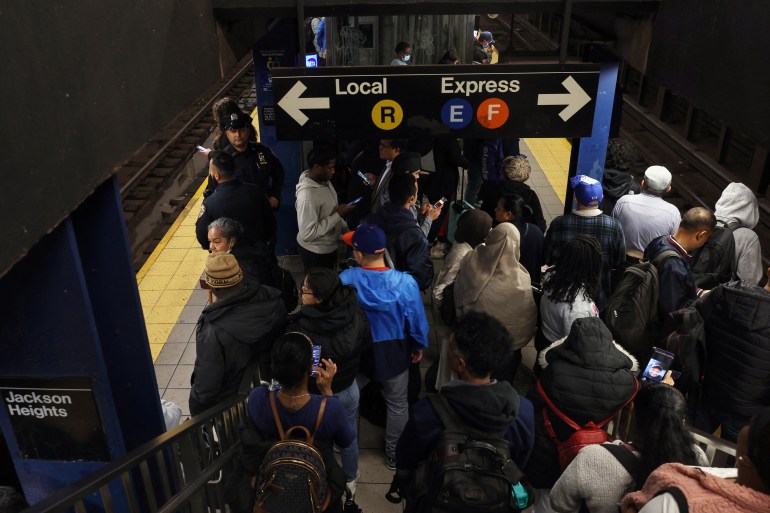
A ‘third wave’ of Ecuadorian migration
By the end of September, the US Border Patrol had apprehended 117,487 Ecuadorians for the fiscal year 2023 — more than four times the previous year’s total.
Anthropologist Soledad Alvarez, a professor at the University of Illinois Chicago, considers this spike part of Ecuador’s third major “wave” of emigration since the 1980s.
She told Al Jazeera the current exodus began in 2014, “caused by the decline in oil prices”.
“Then the pandemic came and hit Ecuador severely,” she said. “Since then, this crisis has deepened under the administrations of Lenin Moreno and Guillermo Lasso, leading to substantial migration in recent years.”
The National Institute of Statistics and Censuses in Ecuador (INEC) reports that income poverty — defined as earnings of less than $89.29 per month — reached 27 percent in June. Extreme poverty, meanwhile, hit 10.8 percent.
Alvarez also points to the deteriorating security situation in Ecuador as a motivation for leaving.
“Increasing violence, fuelled by insecurity and drug trafficking, has forced thousands of Ecuadorians to forcibly leave in recent years,” Alvarez said.

Last year was the worst for criminal violence, with 25 homicides per 100,000 people. And in 2023, the situation escalated. The homicide rate in Ecuador is now the fourth highest in Latin America.
María witnessed many of her neighbours and acquaintances leaving as a result of the violence.
The tipping point for her was when the father of her child passed away during the COVID-19 pandemic. She was alone, racking up debt, and what little she earned was sometimes stolen as the country’s crime rates ticked upwards.
“It’s not just jobs and food that we’re lacking. Ecuador has become extremely dangerous. We now live in constant fear,” María said.
She left Ecuador in the first week of April, travelling north through the Darién Gap, a dangerous stretch of jungle that connects South America to Central America. For two months, she walked and caught buses, spending $3,000 in expenses for the journey.
María said arrived in the US three months ago. She and her child now live in Elmhurst, Queens, where she rents a small space in the living room of her cousin’s family for $800 a month.
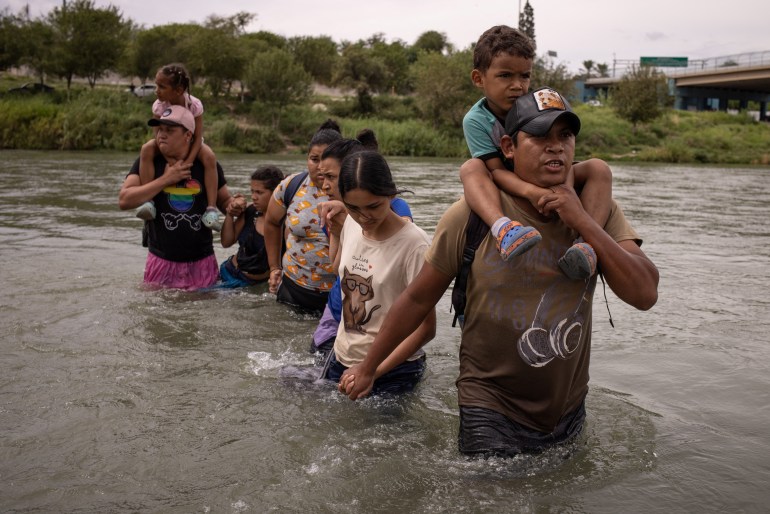
Risks to selling candy
Back home in Ecuador, María said selling candy was primarily women’s work. But in New York, she competes with men and even children on the subway platforms, hawking candy she bought at a wholesale store.
The presence of young children has sparked particular concern among the public. Some subway riders have taken to social media to vent their frustration.
“This is child exploitation and should be banned,” one user on TikTok said. Another called on law enforcement to intervene.
Under New York state law, child labour under age 14 is largely prohibited and can be regarded as abuse. But Alvarez, the anthropologist, said many new arrivals from Ecuador are unaware of the local laws.
“They are ensnared in a reality where sheer survival is their sole objective. They grapple with traumas and escape from destitute circumstances,” she told Al Jazeera.

Additionally, the Metropolitan Transportation Authority (MTA) prohibits unauthorised commercial activity in the subway. Police can fine the candy sellers $50 if they catch them, so María is constantly on the lookout for their uniforms.
“We run away from the police when we see them. A ticket can cost what we earn in a day. Police also tell us that we can lose the custody of our children,” she said.
Gustavo Espinoza, a community organiser, explained to Al Jazeera that there are services and organisations working to educate new immigrants about the resources available to them.
However, those without legal immigration papers are often reluctant to seek assistance due to their fear of deportation, Espinoza said. They “live in constant fear”.
“There is evidently a barrier,” he explained. “There are organisations that want to help but they don’t reach the immigrants who need assistance but are afraid to ask or seek help.”
In August, New York City Mayor Eric Adams estimated the city could end up paying up to $12bn to support migrants over the next three years.
In its $107bn budget for 2024, the city council approved $16m for Promise NYC, a programme that offers stipends for childcare to low-income parents, including undocumented ones.
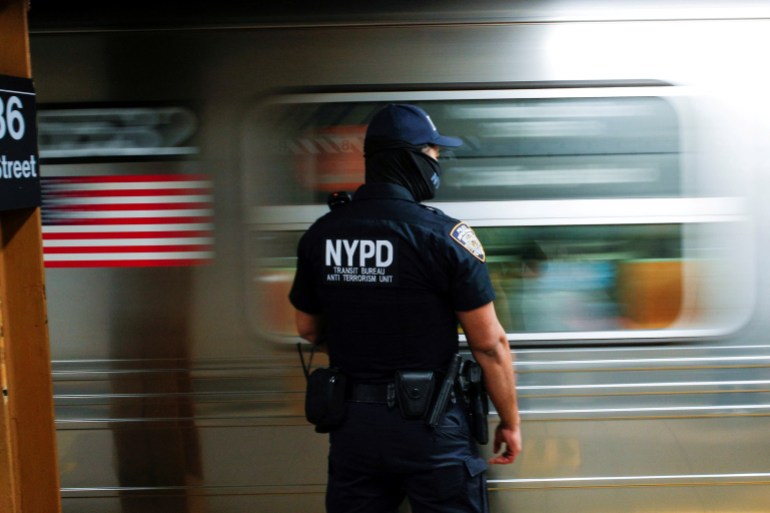
But advocates say those efforts are not enough to help migrants and asylum seekers like María, who rarely goes anywhere without her child.
Some are pushing for the New York State Senate to pass a 2023 bill that would offer universal childcare to all parents, regardless of immigration status. But that legislation is still pending.
For María and others, though, there seems to be no alternative but to carry on with their daily routines, children in tow.
María’s daughter rides on her back throughout the day: She only ever sets the two-year-old down briefly, keeping a watchful eye on the child. On top of her cargo of candy to sell, María carries around cookies and a bottle of milk to feed her child, who often dozes as her mother works.
“I can’t leave my daughter alone at home. Nobody will care for her,” María said.
Life, at least for the time being, means balancing both childcare and selling candy in the subway: “There’s no other option.”
Sumber: www.aljazeera.com
 Skip to content
Skip to content

